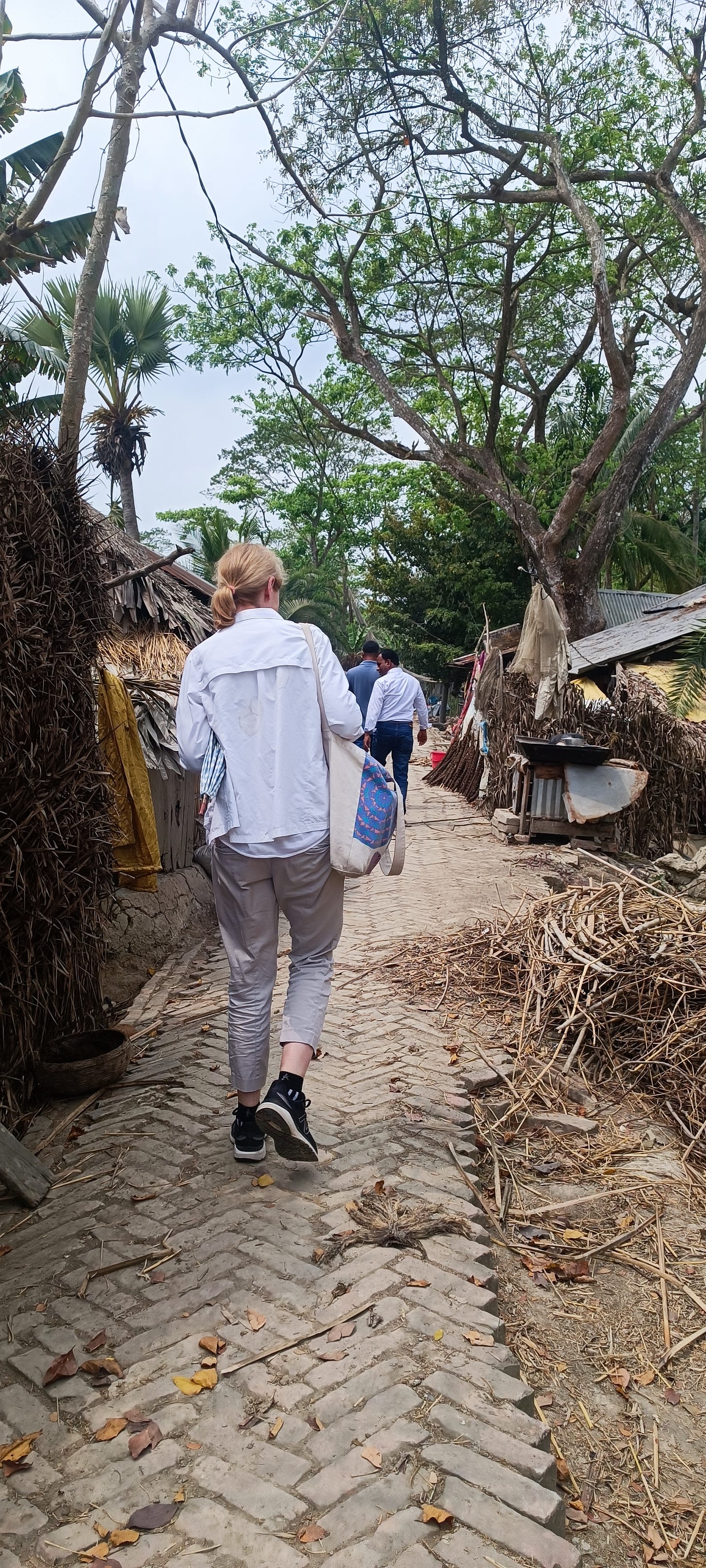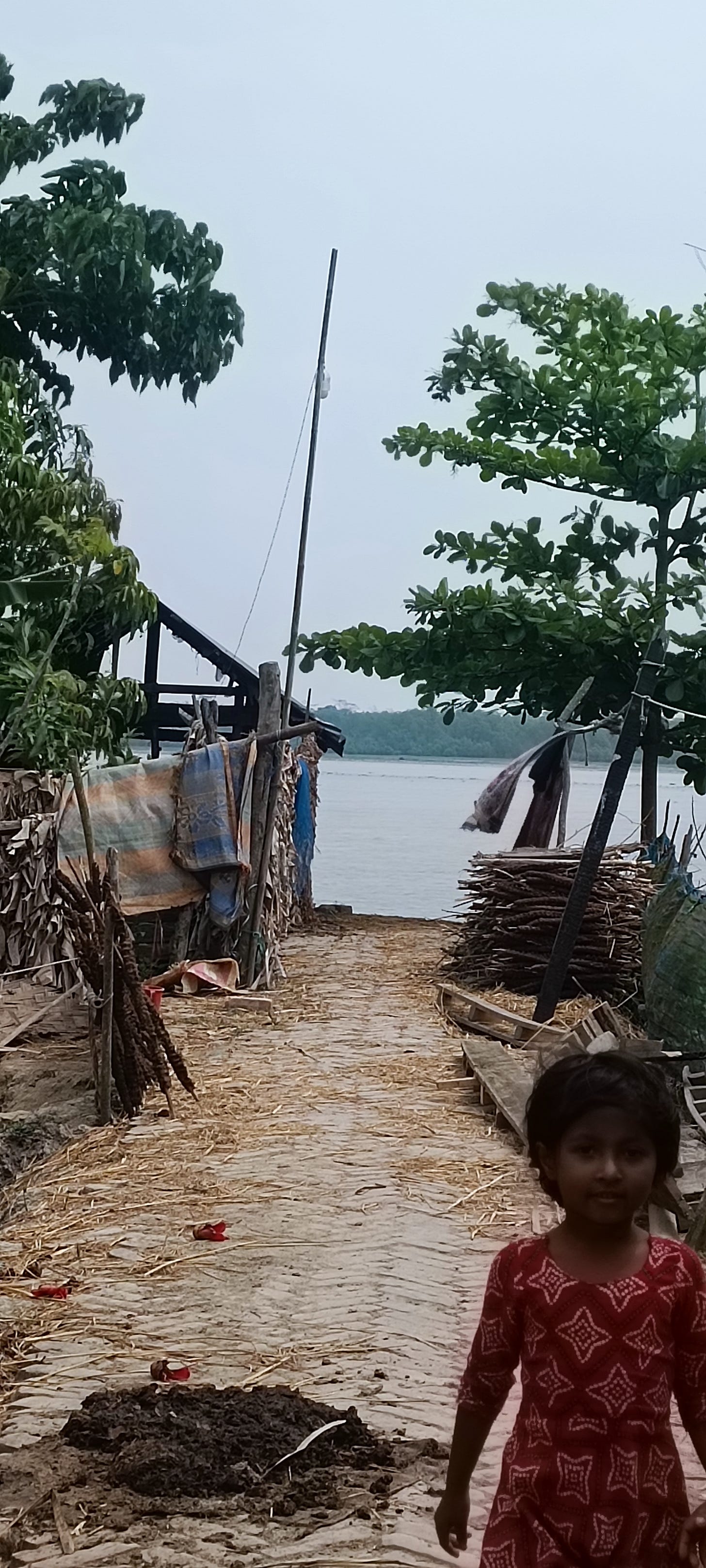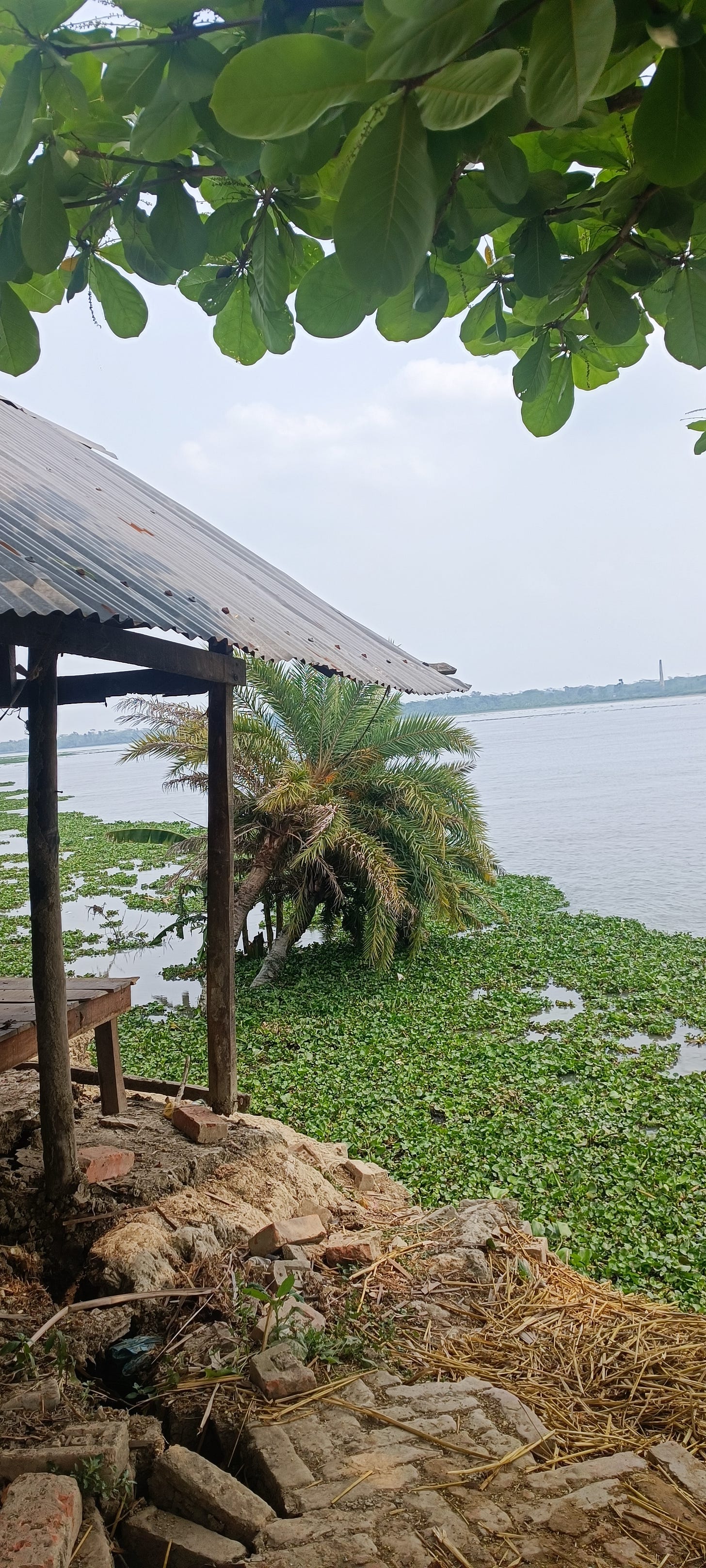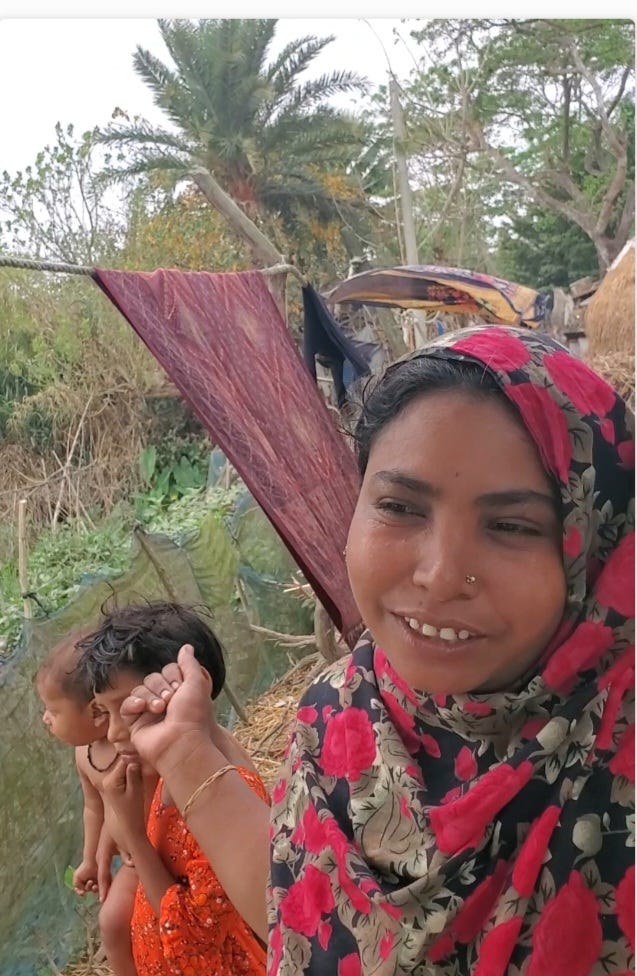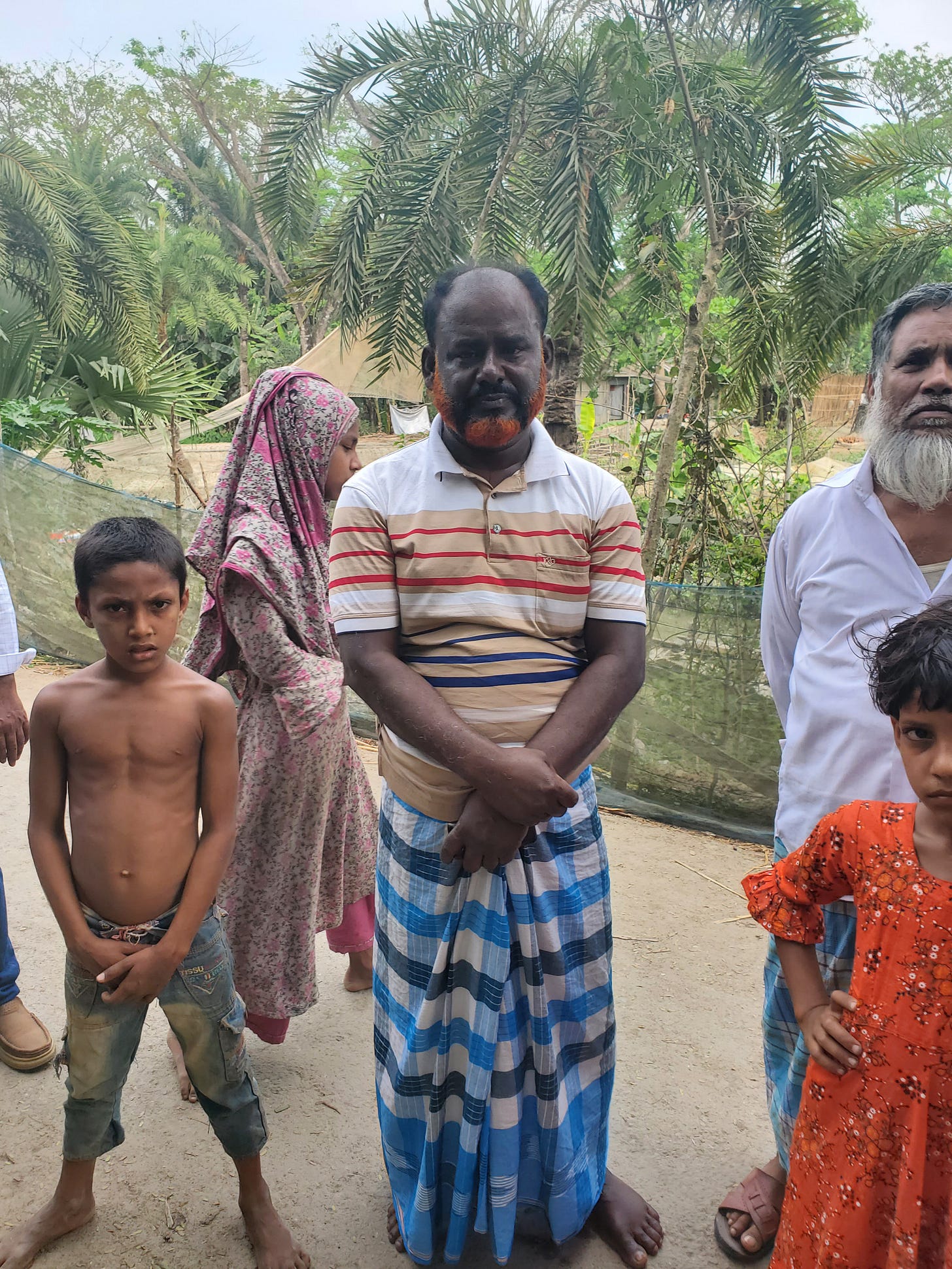Visiting the future
The family of man in a time of extremes
I visited Bangladesh this past week to interview a host of people in Dhaka and make a couple of field trips to the south. The country is ahead of the US on the climate curve, and being there felt like visiting the future: the effects of extreme heat events, flooding, increasingly salty water and soils, and extraordinary storms are compounding existing difficulties for many Bangladeshis. The country, in one of the most densely populated and lowest-elevation regions on the planet, was among the first to recognize the need to adapt to the climate changes that are already baked into our world.
At the same time, the cascading, accelerating impacts of what's ahead will be extremely difficult for Bangladesh to manage, just as they will be for the US. It's going to be important to consider our interrelated destinies along a host of axes. What’s happening in Bangladesh will happen here.
This past Thursday, I visited Gabtola. It's a village in Bangladesh's coastal region that is being decimated by sea level rise. I met adaptable, plucky people who are doing their best to hang on. Gabtola is a small place whose story has enormous implications for global coastal cities: Half of the village has already left town.
Gabtola is next to the Panguchhi River near Morrelganj, just above the Bay of Bengal. Here’s a map showing Morrelganj and the river:
Here’s a map showing where this is. Morrelganj is about two hours southeast of Khulna.
Mr. Asasuzzaman Milon, who lives nearby, guided us to Gabtola from Morrelganj.
It was an oppressively hot day. Mr. Milon felt it was too hot for the time of year.*
Half an hour outside Morrelganj, we got out of the car and left the main road, walking to our left on a narrow brick path. Pieced-together shanties leaned crazily on either side of us.
That’s me, balancing parasol, digital recorder, and camera. The brick path ended abruptly.
The wide piece of land on which the rest of the brick path used to exist had been ripped away by the swiftly flowing river, along with all the dwellings and fields that had been on that land.
This bench stood at what is now the end of the path, right at the edge of nothingness. Mr. Milon told us that the last time he was there someone's house had stood next to the bench. He was saddened but not surprised. He told us that tomorrow the place where we were standing might be gone, and tested the bricks near the bench gently with his heel to see whether they were coming loose.
The flow of the river was very strong, sweeping by us from right to left, leaving drowned trees behind. That bench was almost over-determined from a literary perspective: People had been there and then suddenly within the last few years had lost everything. Since then they had moved time after time, some building makeshift, teetering shacks nearby that now flood routinely every time there is a new moon. When the shacks flood people can't cook in their homes.
Morrelganj is Mr. Milon's home and he has been helping the people of Gabtola to hang on. A woman with three children came toward us, telling us she has been moving along, losing her house once, then a month ago losing it again, and is now staying in a temporary shack.
She said, pointing and smiling, that everything had gone down on the other side of her village and that we would start feeling bad when we saw what had happened there.
We turned around and walked back to the main road, continuing along the path the car had followed to reach the village.
What had been a modest river had become a wide-mouthed hungry beast: it had completely redrawn what had been the straight-line 10km-long continuation of that main road, running across land to a ferry station on the other side, into a yawning curve. Even a month ago the road still stretched halfway across what was now a wide bay of furious hyacinth-topped river. We were told each new moon was bringing very high water far up into the village, and that every time those new tides receded they swept away more of what had been Gabtola. "It's increasing a lot," Mr. Milon said.
On the day we visited, the tide was rising again. In a few days another new moon would be arriving to wreak havoc. "They're losing the land faster," Mr. Molin said.
Mr. Molin told us he never thought this would happen in his lifetime. The Gabtola he knew was a place of crops and fields and bustling life. Now the frayed remnant of the main road is already buckling and cracking, and what had been minnow ponds and fields next to it are gone. "It's happening really fast," he repeated. "It's because of climate change."
These sandbags sat next to a mudflat that had recently been a field. We were told that a prior government official had been interested in the area and had arranged for the sandbags. But he'd been replaced in a recent election and the new minister has no interest in doing anything there. "The government doesn't even see this is happening," we were told.
Initially people further inland whose land was still sound had opened their houses to their displaced neighbors. Things became tricky when the displacement became permanent and the guests didn't want to leave. As the cataclysm in Gabtola rolls on, neighborly generosity will fall off.
It was Md. Shahidul Alam Sheikh, pictured with reddish beard, who told me that half the village has already left, moving to find jobs anywhere they can—in Dhaka, in towns in India, in other villages in Bangladesh.** He had been a solidly middle-class successful farmer, quite well off, for the twelve years after he bought land in Gabtola. But he has lost everything to the floods. He moved three times in recent years and tried several times to get a response from the government about the village's plight, but has heard nothing. He managed to build a shack out of material he was able to salvage from his old house, and he has turned to fishing. "The government should care because they're losing voters," he told me. Mr. Alam Sheikh said he wanted me to write about the devastation in Gabtola. He wants the government to know what is happening.
* More on extreme heat and the hard Bangladeshi summer ahead in later columns.
** Two thousand people move to Dhaka every day. Dhaka suffers from extreme heat and flooding itself, as well as apocalyptic traffic. More coming about Dhaka as well.
Many thanks to Ms. Ruxmini Choudhury, Curator with the Samdani Art Foundation, who took several of the photographs included here, translated for me what people were saying, and taught me a great deal. Also thanks to the Lakshmi Mittal and Family South Asia Institute for its support.






